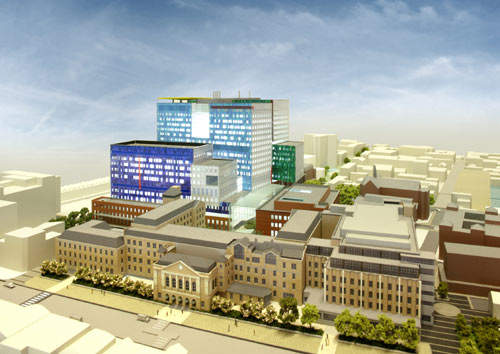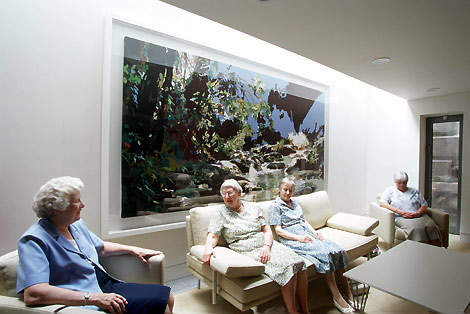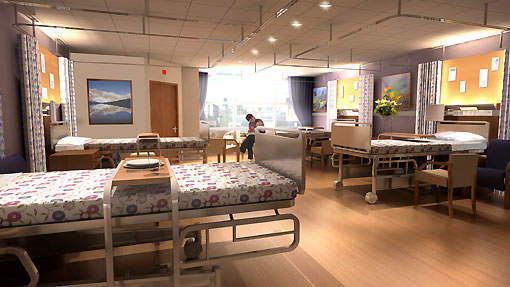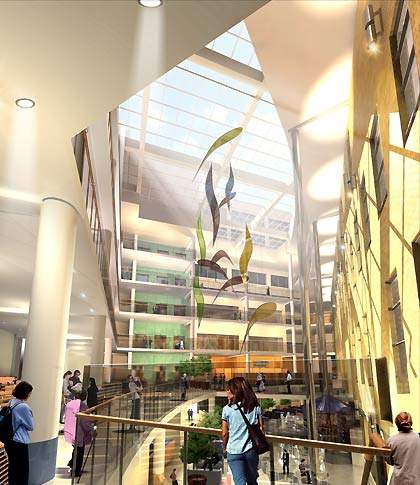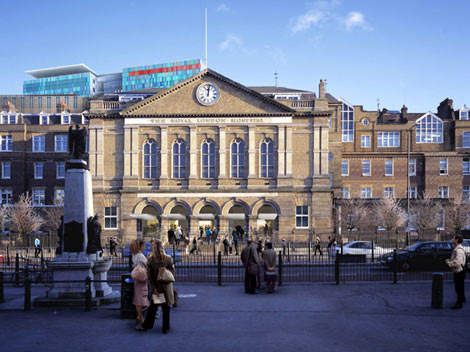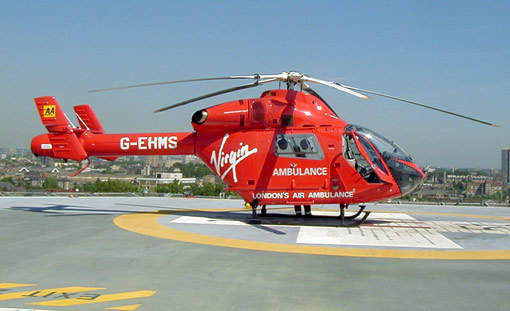The Royal London Hospital in Whitechapel and Barts in The City of London, both part of the Barts and The London NHS Trust, are each undergoing £1 billion of refurbishment and construction. The plans mean that some of the UK’s most deprived communities will have access to leading healthcare facilities in Europe.
The Royal London will be Britain’s biggest new hospital, providing clinically renowned general and specialist services to the population of east London and beyond. The historic buildings of Britain’s oldest hospital, Barts, will be refurbished alongside a brand new clinical building to create a state-of-the-art Cancer and Cardiac Centre of Excellence.
The two new hospitals will have 1,248 beds, an increase of 186 on current numbers. Over 40% of the beds will be in single rooms with ensuite facilities, with the remainder in roomy, four-bedded bays. Wards will be light and airy with natural ventilation and separate areas for women and men. Friends and relatives will be able to stay in overnight rooms located close by.
Planning permission for Barts was given on 14 September 2004. The planning application for The Royal London is currently being considered by the London Borough of Tower Hamlets.
The proposals for Barts blend the hospital’s historic Georgian buildings with the modern architecture of the new building. Cleared of vehicles, the historic square will become a pedestrian plaza and focal point for wayfinding. As well as state-of-the art facilities, the hospital will benefit from a clear focal point of access and main reception.
Over the summer of 2004, Kenton and Lucas Wing at Barts became the first of the Trust’s three advance projects to open fully to patients. The relocation of Barts Sexual Health Service to the refurbished building at the end of June represents the final move into Kenton and Lucas Wing, which also houses the Trust’s Centre for Reproductive Medicine and the integrated rehabilitation unit for Barts, both of which opened earlier in the 2004.
As well as greatly improving staff morale, patients have already commented on how relaxed and professional the atmosphere is in the new centre. Together, these factors contribute to a more successful patient experience, in terms both of reduced stress and improved treatment.
Patients are also starting to be seen in the new Barts and London Breast Care Centre, a second advance project. Situated in the historic West Wing at Barts, the innovative Breast Care Centre will co-locate all the Trust’s breast care diagnostic and screening services in a patient-centred environment, combining state-of-the-art digital mammography technology with the work of leading contemporary British artists and sympathetic interior design – all within the restored grade-I listed building.
The new Pathology and Pharmacy Block, the third advance project, on the corner of Cavell and Newark Streets at The Royal London Hospital, is now clearly recognisable.
Once building work will be complete in August 2005 and the new block will house an automated molecular laboratory and a number of other general pathology labs, a mortuary with a post-mortem room and body store, a small conference suite, several lecture rooms for medical students and a central reception. The main pharmacy service for the Trust will also be based in the building.
The new hospital at The Royal London will feature two glass towers, one equipped with a helipad for London’s Helicopter Emergency Medical Service (HEMS), which is based at the hospital.
A ‘health mall’ will form the core of the redevelopment, and the new building will replace many of the existing buildings with a coherent structure, purpose-built to support the delivery of 21st Century clinical care, while sympathetic to the historic buildings, which will be retained.
HOSPITAL CONSTRUCTION SCHEDULE
- January 2005: financial close – final contract due for signature, design signed off and construction begins on main project
- Autumn 2005: construction due for completion on the new state-of-the-art Pathology and Pharmacy Block at The Royal London, ready for installation of equipment and staff familiarisation
- Late 2005: Pathology and Pharmacy Block at The Royal London opens
Skanska Innisfree is the preferred bidder for the new hospitals project, which is being paid for using the private finance initiative (PFI), the Government’s preferred method of funding large capital projects across the public sector.
Under PFI, Barts and The London NHS Trust will continue to be responsible for the delivery of all healthcare services to patients, while a private-sector partner designs, builds or refurbishes, and maintains the buildings.
HOSPITAL ‘ZONES’
At the heart of the Skanska Innisfree approach to the developments is an innovative concept that clusters clinical spaces and support service delivery facilities in discrete ‘zones’ throughout the hospitals. Zones are suites of beds or departments located alongside relevant diagnostic and treatment facilities. Support services operate from ‘hubs’ alongside these patient areas but, wherever practical, separate from them to minimise disruption.
“The scope of this redevelopment will delight our staff and patients, for whom conditions in our ageing buildings are far from ideal,” said Paul White, Chief Executive of Barts and The London NHS Trust. “Despite these challenges we have maintained the lowest mortality rates in the country, but it is time that the facilities in which we care for our patients reflect the clinical excellence of staff. I am confident that in Skanska Innisfree we have chosen the right partner to deliver the 21st Century hospitals our local communities so desperately need.”

